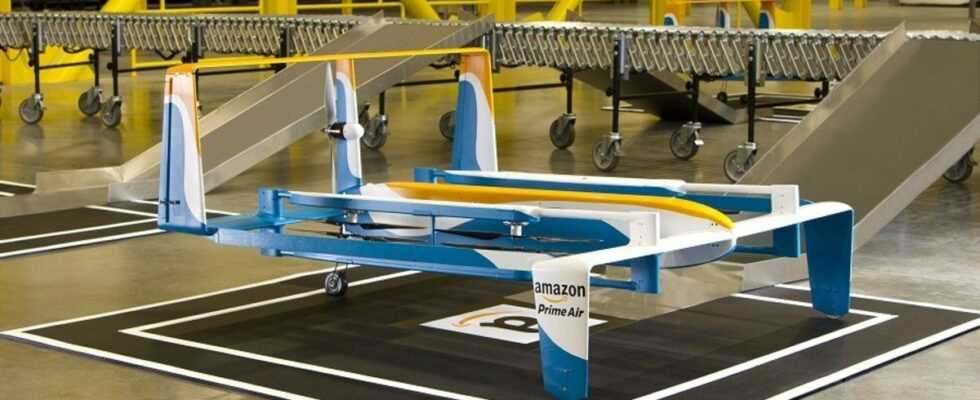A Bloomberg report points to Amazon’s struggles to make its aerial drone package delivery program viable, nearly 10 years after it was announced.
Amazon is not giving up on its plan to one day deliver its packages by air using autonomous drones. The company continues to conduct testing of this technology in Pendleton, Oregon. Except that the project continues to accumulate delays.
As a reminder, it was in 2013, nine years ago, that Jeff Bezos first mentioned his desire to deliver packages with drones. At first, no one really believed in it, but Prime Air gradually established itself as a real subject of research and development for the group. In 2019, significant progress was announced, with the presentation of a new, more sophisticated drone model. In 2020, the Federal Aviation Administration even granted Amazon a drone fleet operator license. Despite the promises of the online distribution giant, the Prime Air program has still not been launched.
And according to Bloomberg, several recent incidents have – again – put a wrench in the propellers of Amazon drones. A crash reportedly took place in May 2021, with suspicion that the site had to be cleared and wreckage removed before the FAA could investigate. A month later, a drone saw one of its motors shut down and the two safety procedures provided for in this case failed. The drone also crashed there, falling from an altitude of 50 m and causing a fire outbreak. This time, the FAA was able to write a report on the incident.
Accidents that call into question the reliability of Amazon’s drones and inevitably lead to new developments and the implementation of additional procedures to ensure the safety of these machines and prevent them from crashing in inhabited areas that they will necessarily be called upon to fly over. So much so that the only deliveries actually made by Amazon drones are those organized as part of communication stunts, such as in Cambridge in 2016.
In this context, Av Zammit, spokesperson for Amazon, insists: “Safety is our top priority (…) We use a closed and private facility to test our systems to their limits and beyond. With rigorous testing like this, we expect these types of events to occur, and we apply the learnings from each flight to improve safety. No one has ever been injured as a result of these flights, and every test is conducted in accordance with all applicable regulations.”. If we believe this statement, Amazon would voluntarily put its drones in perilous situations to test them in extreme conditions, which would explain the occurrence of incidents.
Nevertheless, according to the testimonies of former employees of the Prime Air program collected by Bloomberg, the priority would have been placed on the rapid development of technology to the detriment of security. Cheddi Skeete, a former project manager, was even reportedly fired for raising security issues with his superiors. Again, Amazon denies this, indicating that it encourages feedback from its employees on technologies in development. A former flight assistant went in the same direction, assuring that certain tests were carried out without a complete team and that employees had to perform several roles at the same time.
